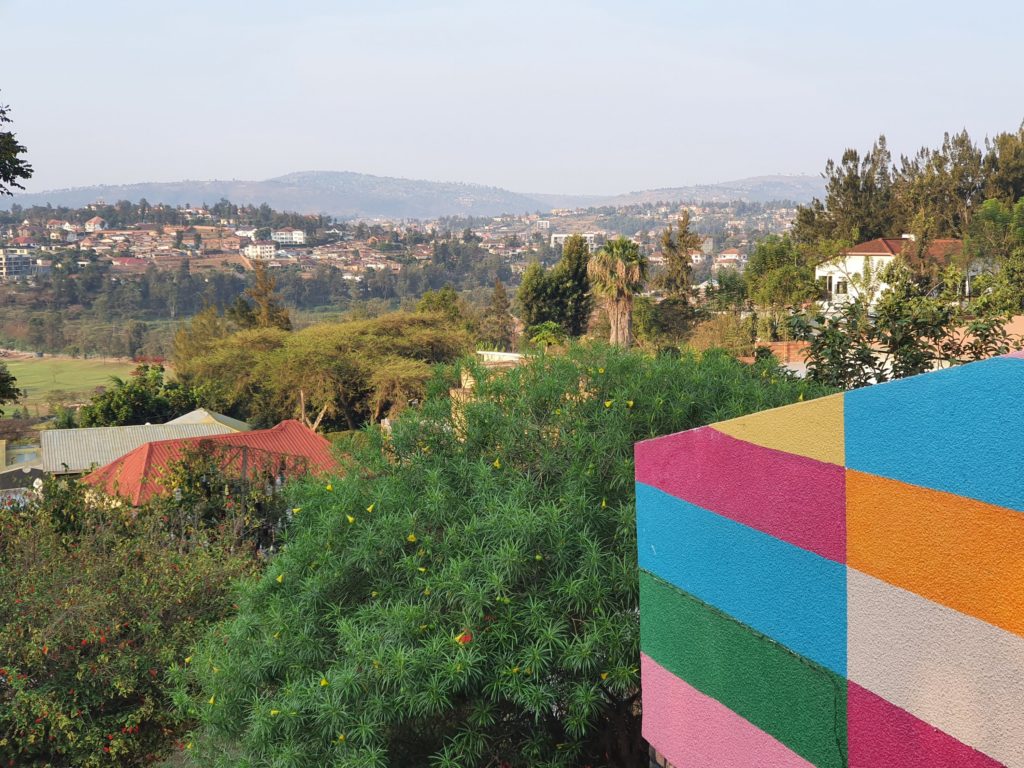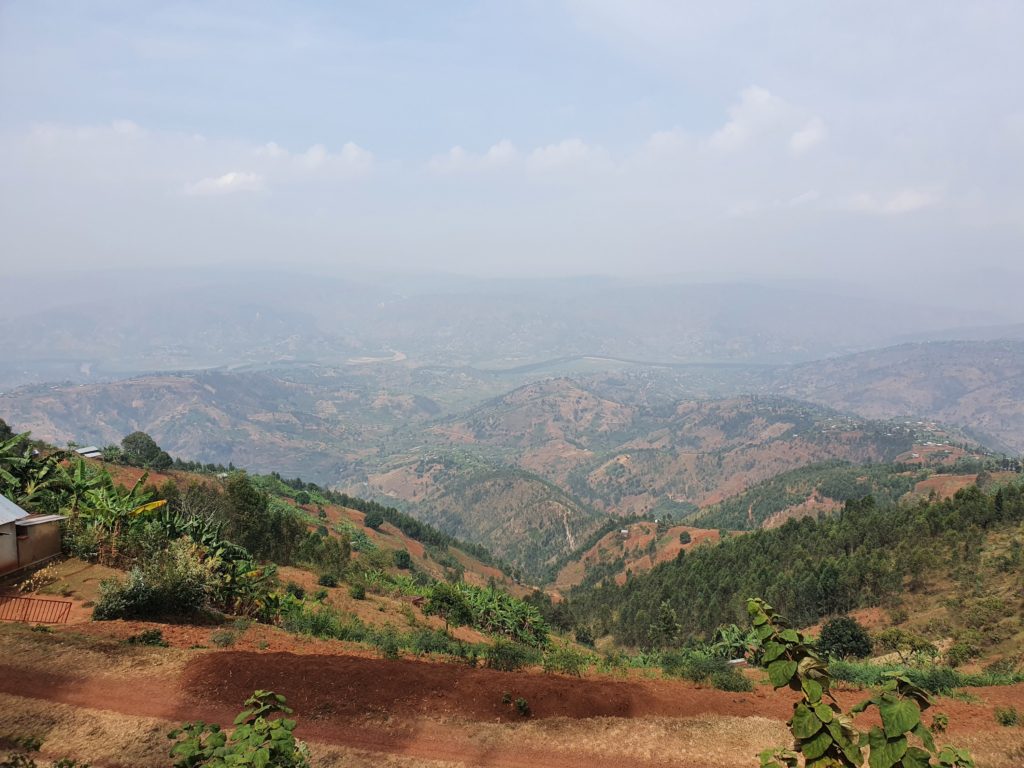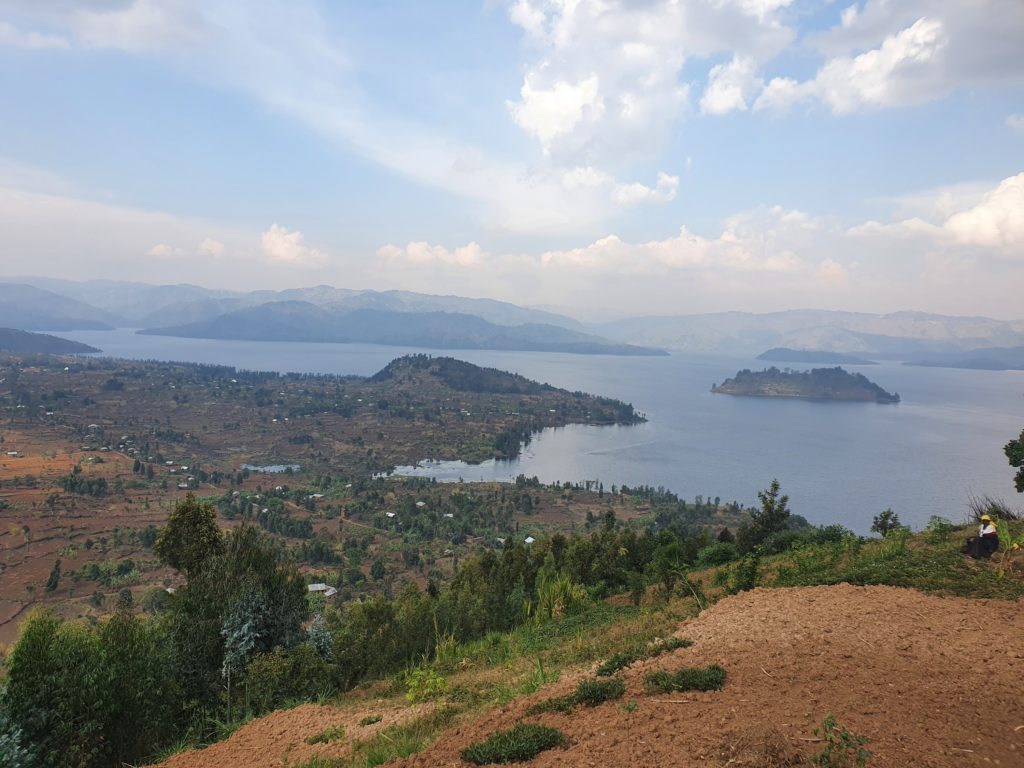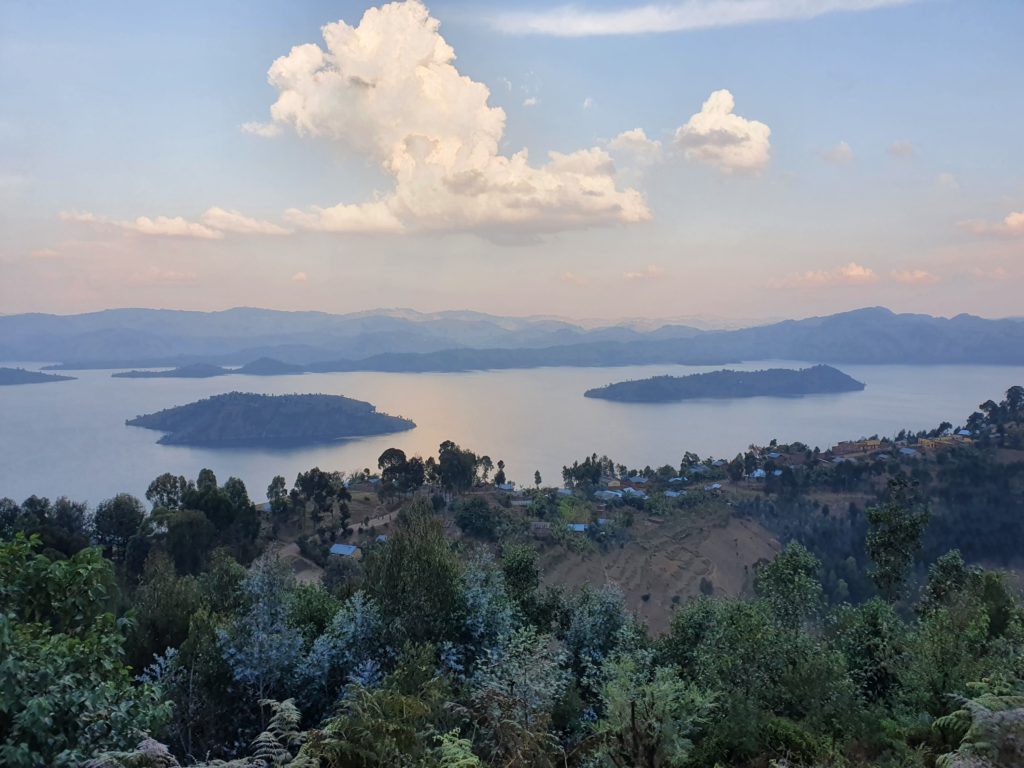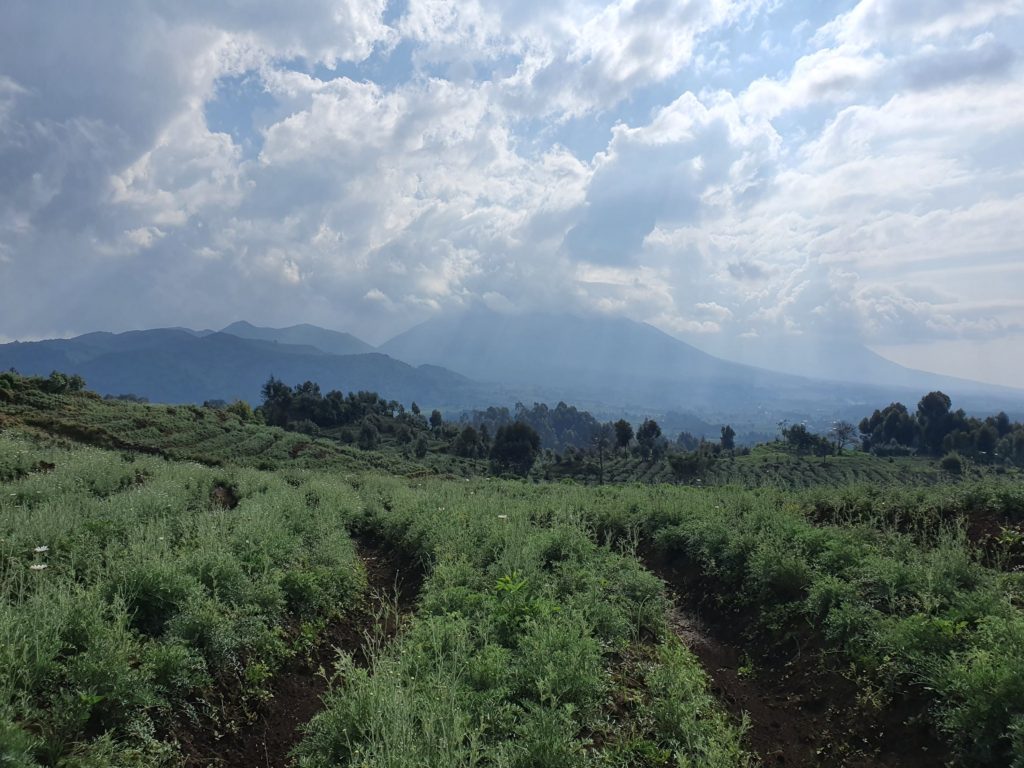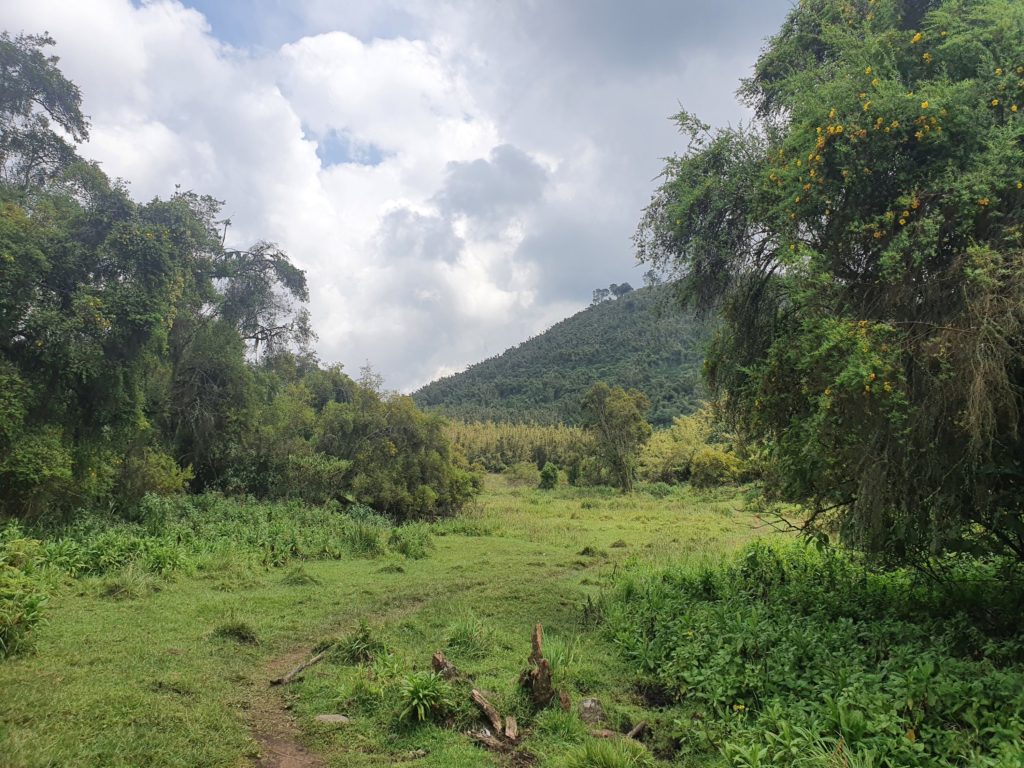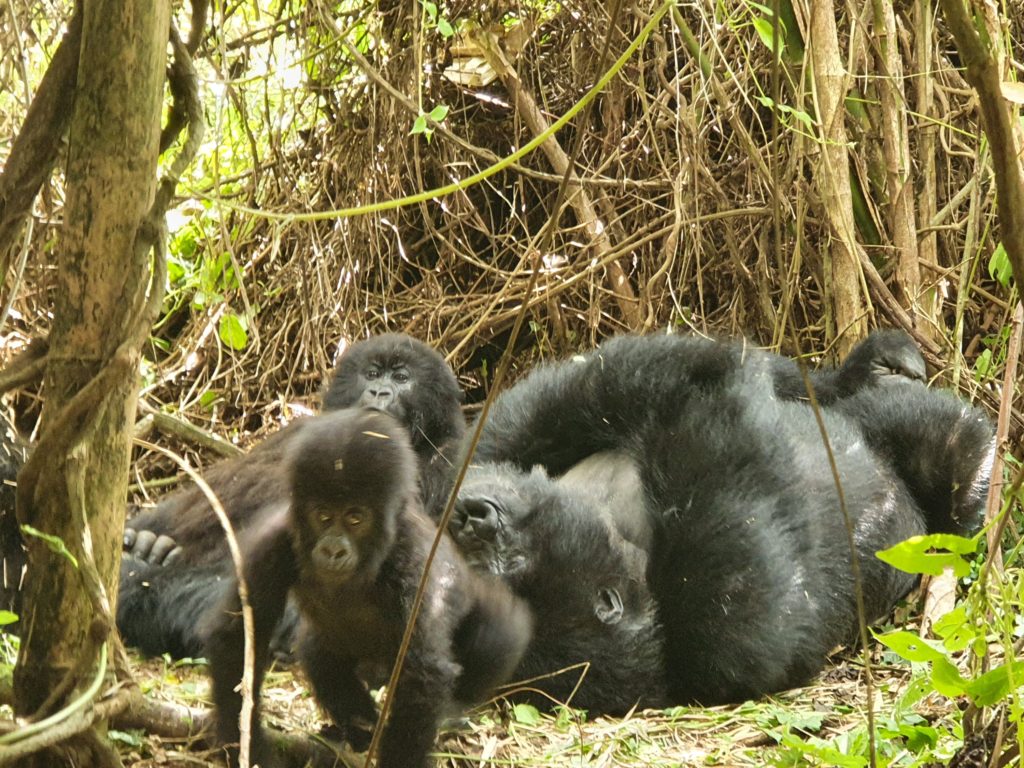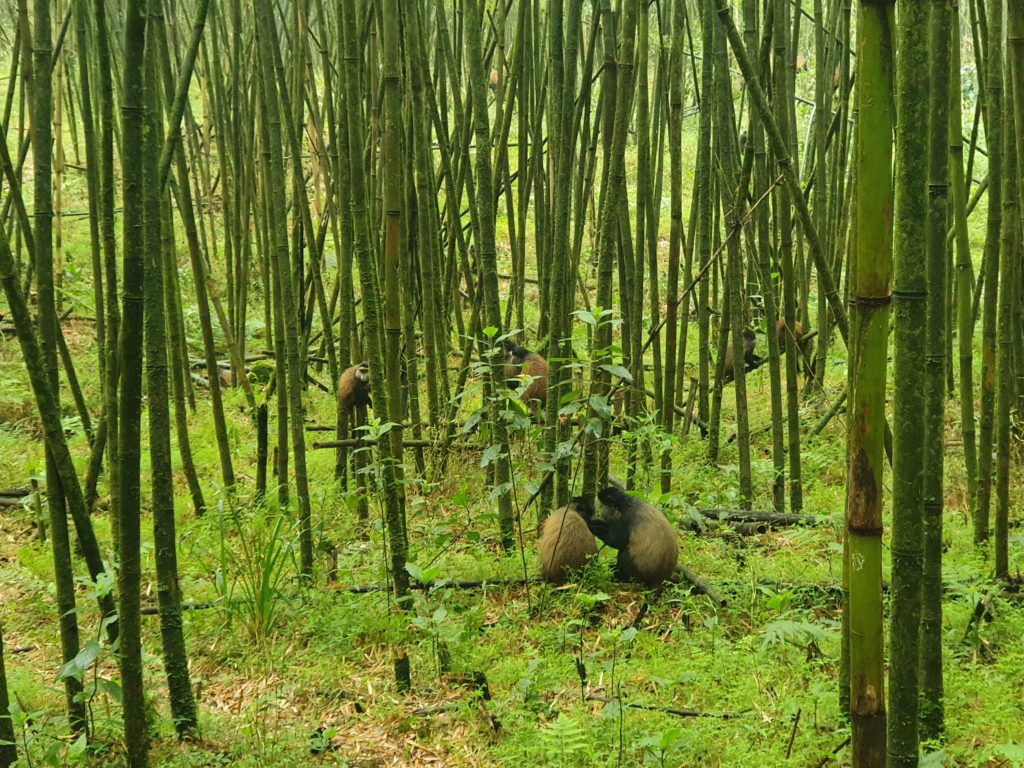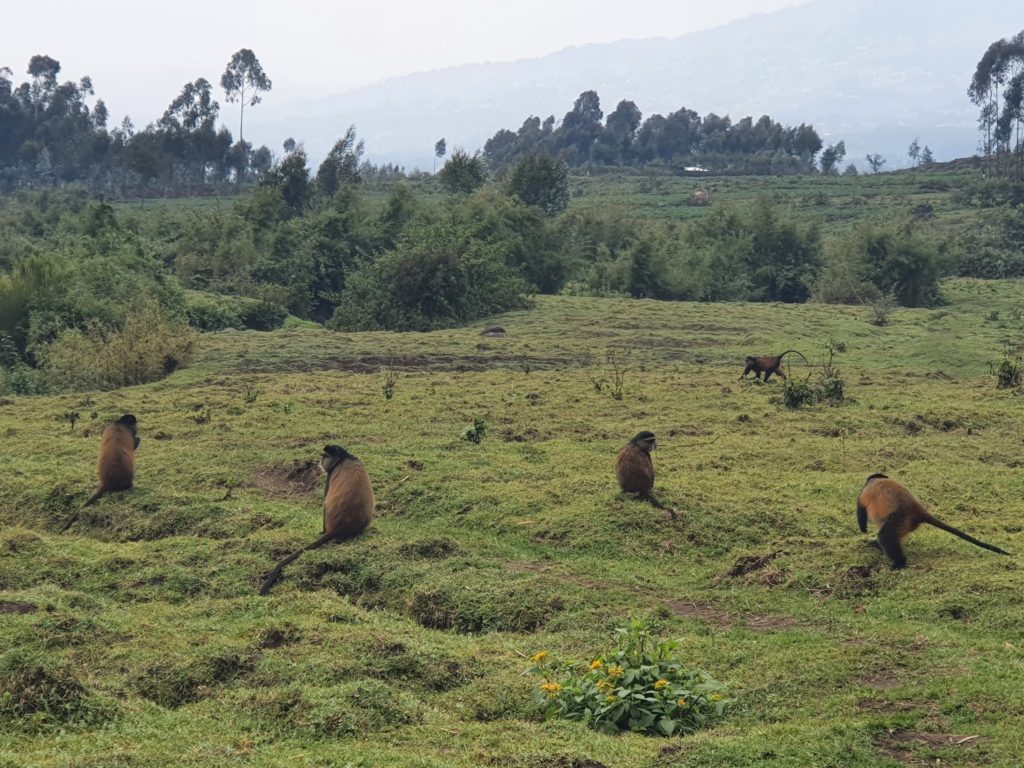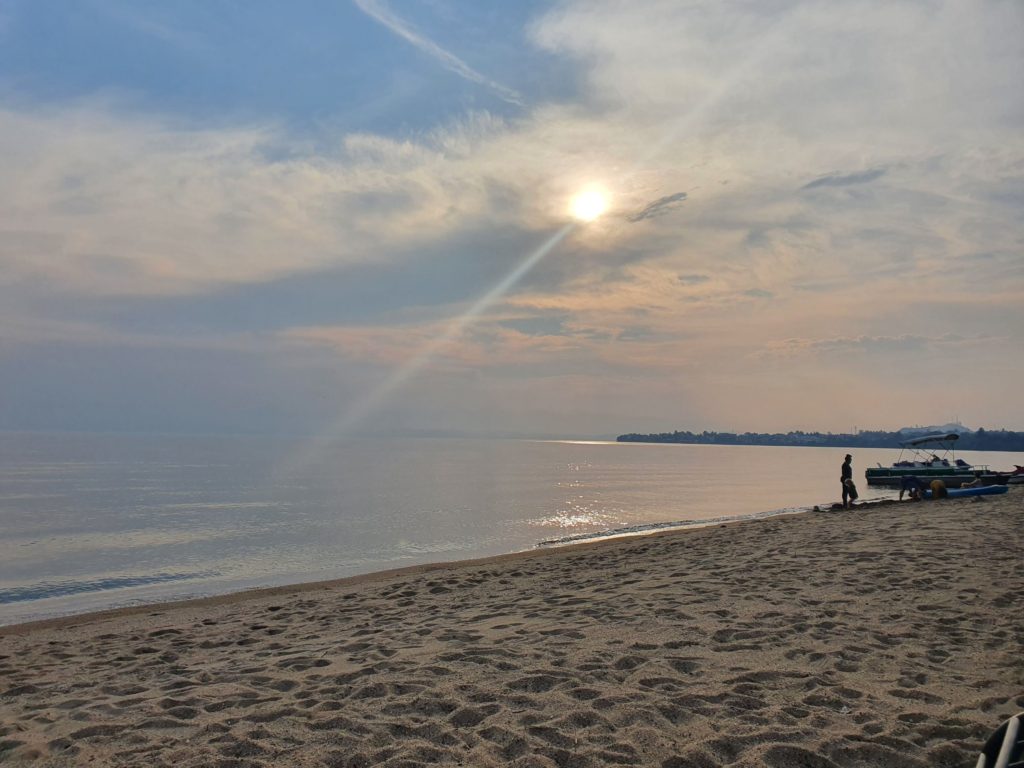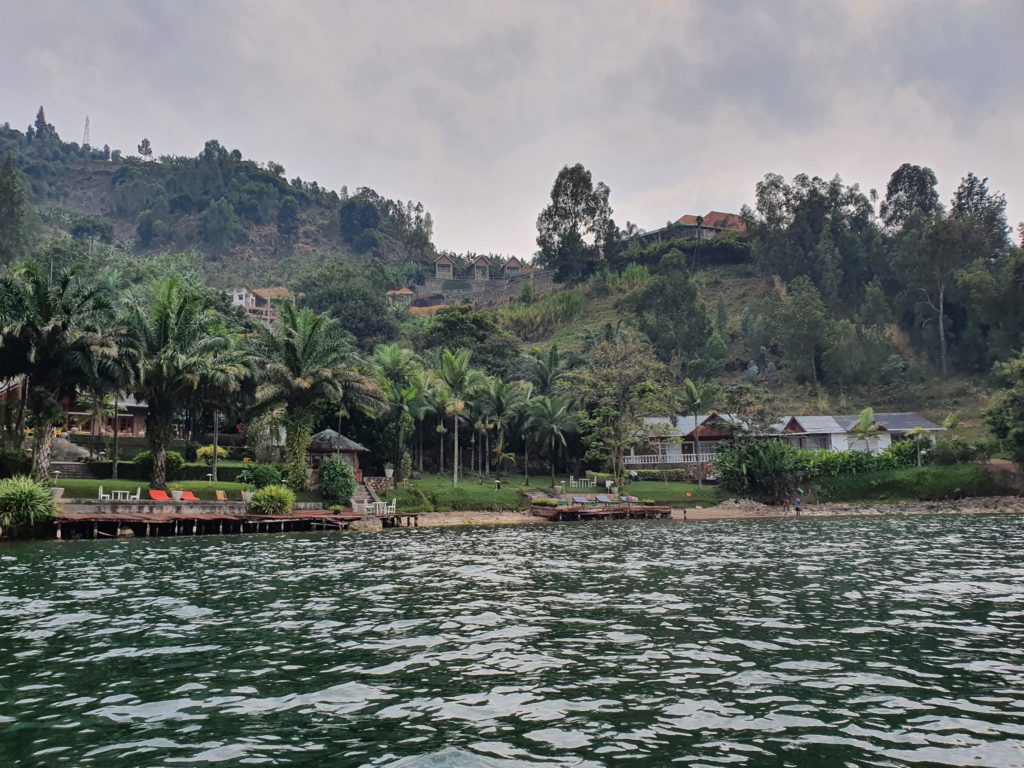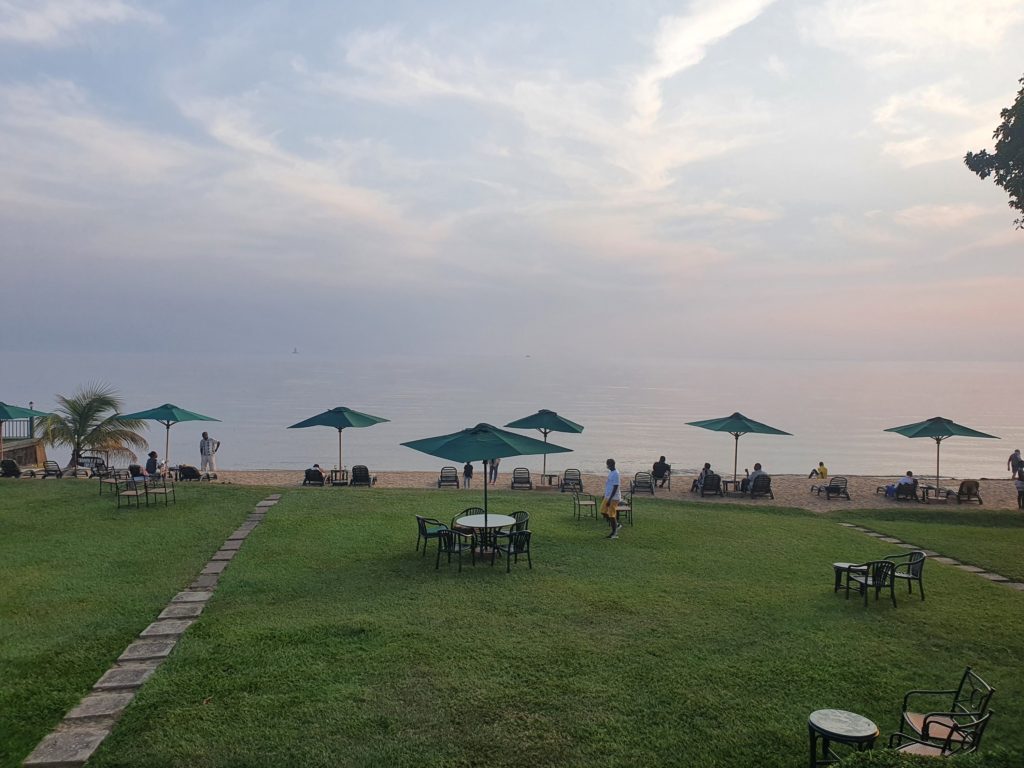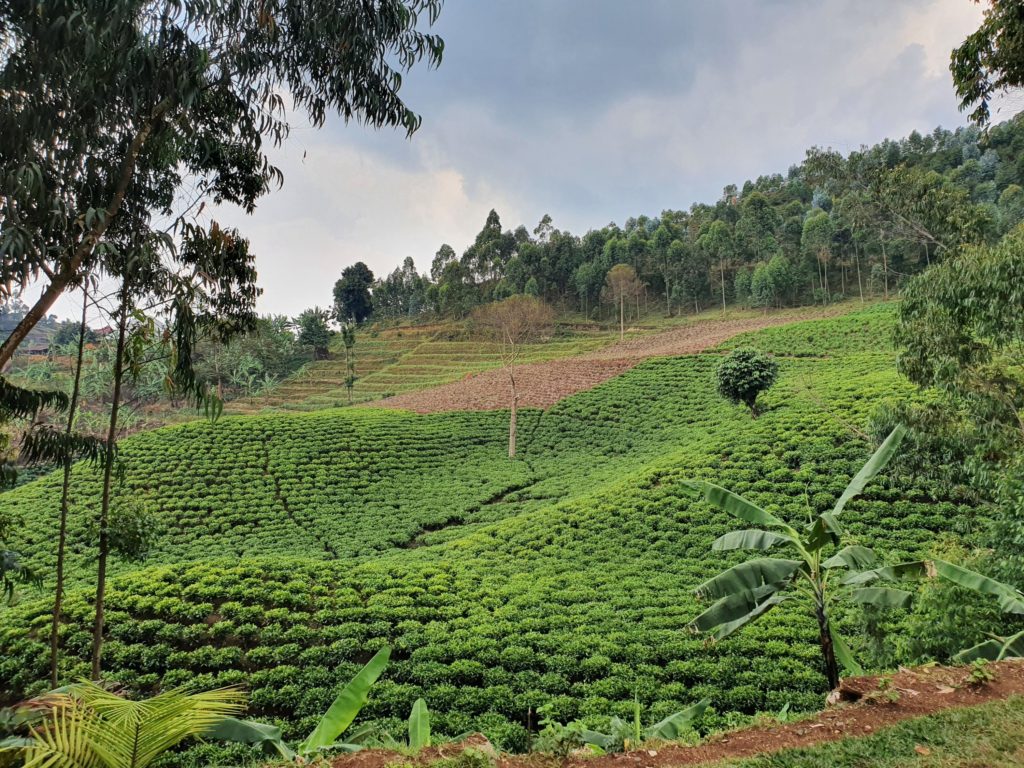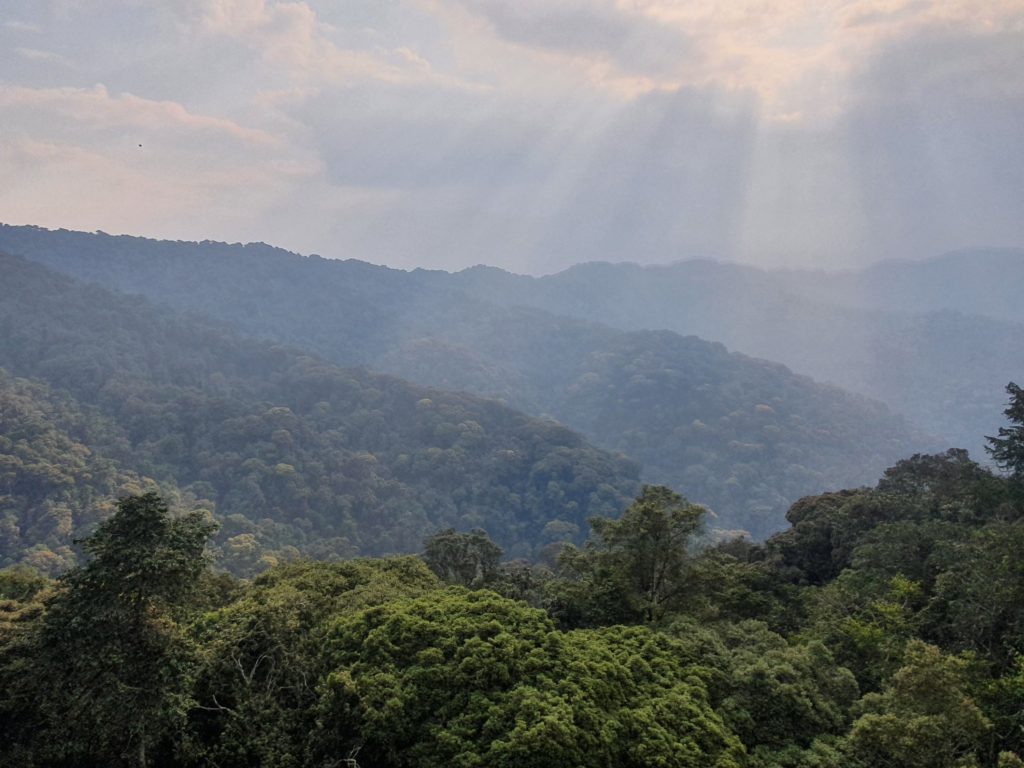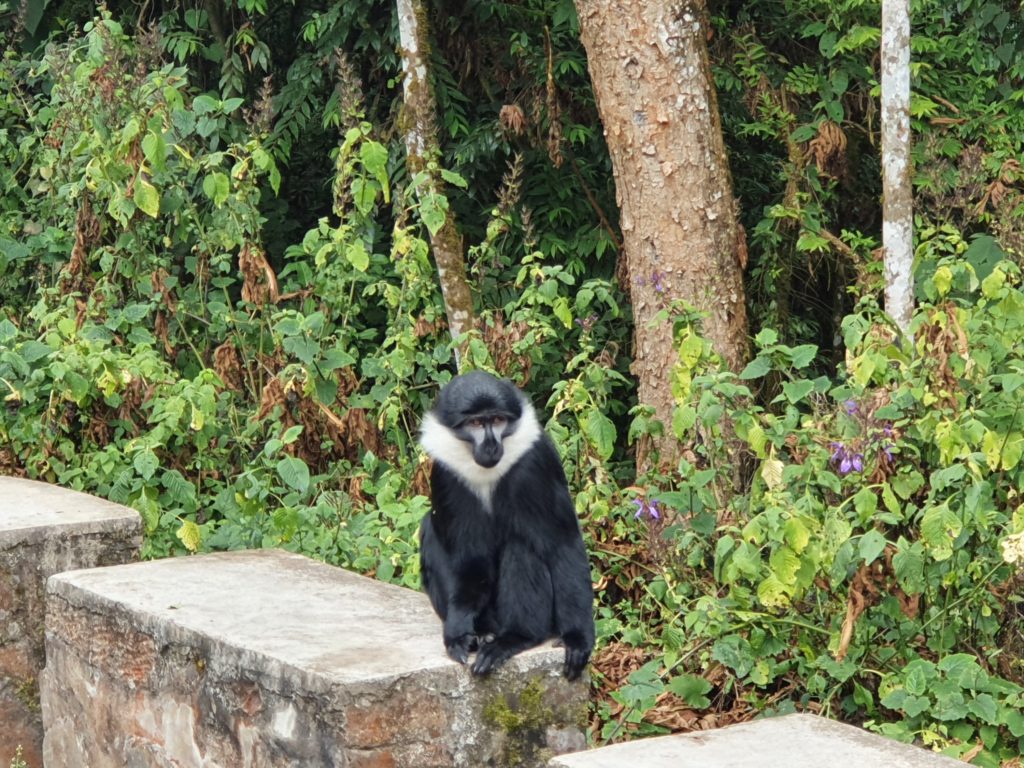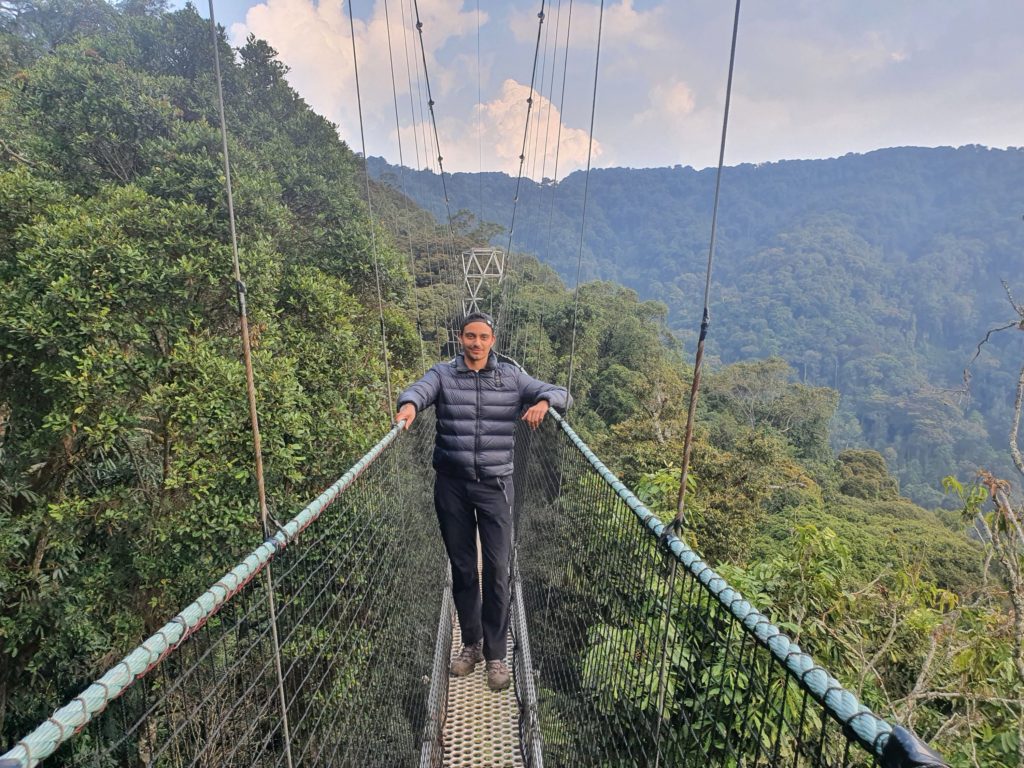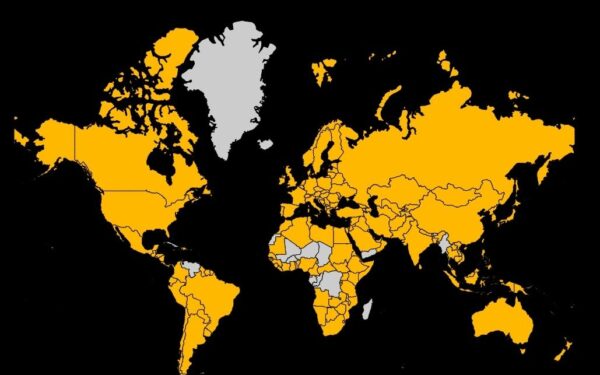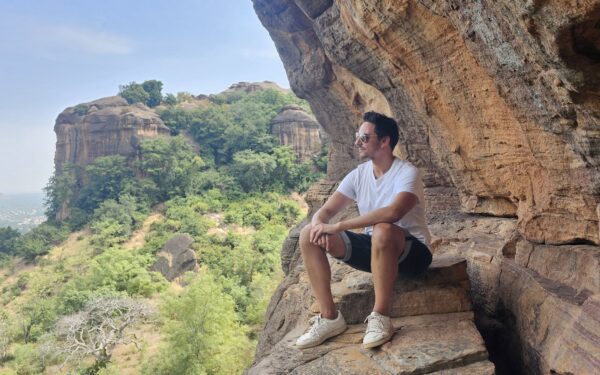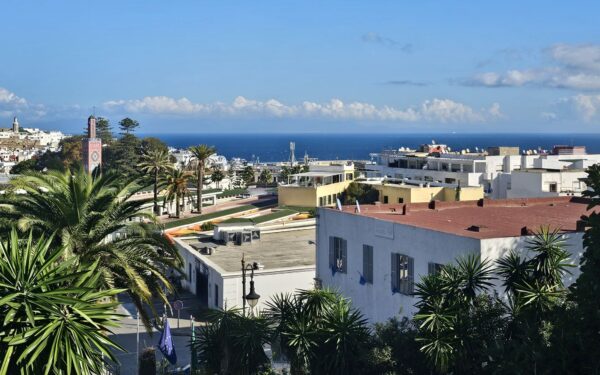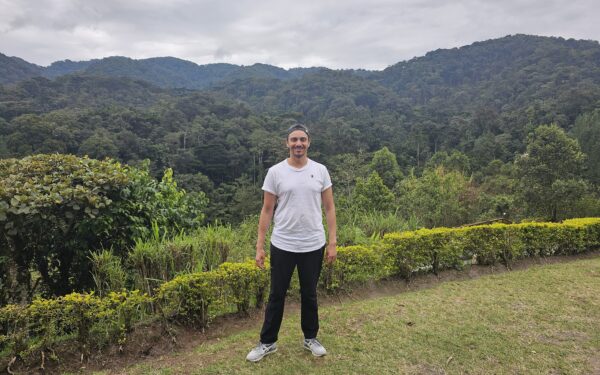Trip Report: Rwanda
Visited in August 2020
Of the 90+ countries I have not been to yet, Rwanda was one I was looking forward to the most, mainly for two reasons.
On the one hand, because this East African country is one of the best destinations to see apes – my favorite animals – in their natural habitat. On the other hand, many people consider Rwanda an African model country.
Rwanda is sometimes called the “Switzerland of Africa”. A safe country with little to no corruption. Plus, poverty is at a lower level than in most countries on the continent. Or in other words: it seems that Rwanda is one of the few African countries that could actually overcome its problems and become a more or less functioning state.
This is all the more surprising when you consider the tragic history of this country. Of course, I mean the genocide that took place over 20 years ago and was one of the most traumatic of the last century. More on this later…
7 days in Rwanda: the route
In total we spent seven days in Rwanda. One of these days was a pure transit day and we also spent half a day in quarantine. At the moment, Rwanda receives guests from all countries of the world. You just have to bring a negative PCR test result and do another test after arrival.
Until you get the result, you have to wait (alone) in your hotel room. They say that the test result will be available after 24 hours. Fortunately, I received the email with the (negative) result after less than 10 hours. That meant that my quarantine was over and I was free to leave the room.
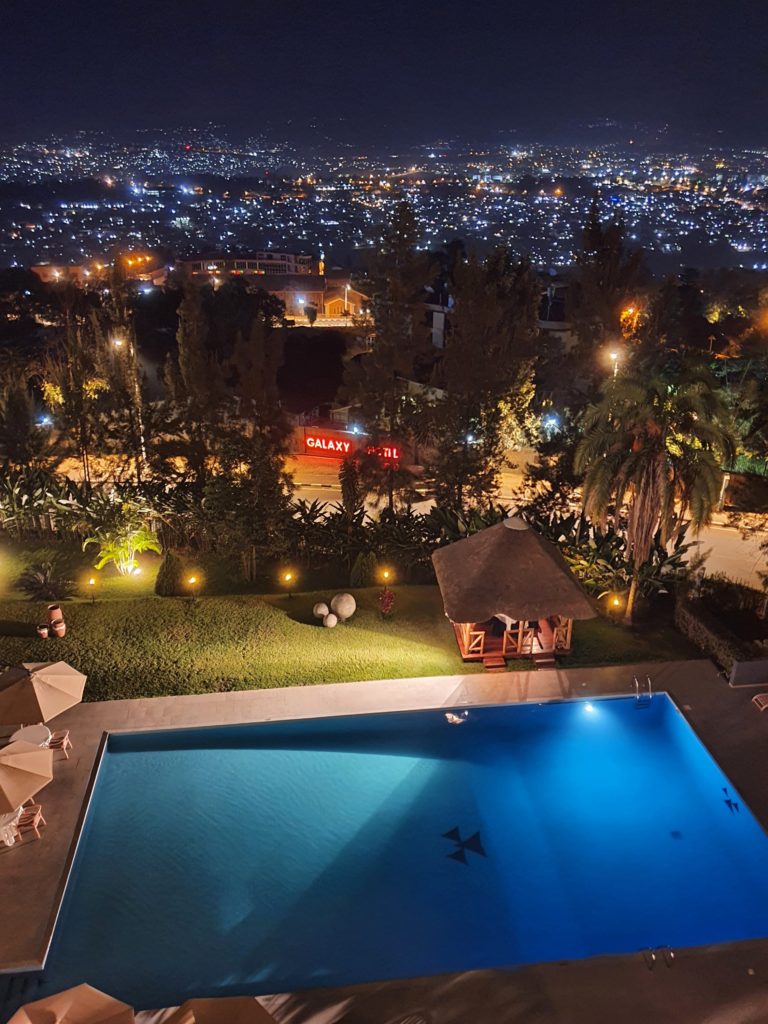
The places we visited in Rwanda were the Volcanoes National Park, Gisenyi on the coast of Lake Kivu, the Nyungwe National Park in the south plus the capital Kigali. Rwanda is a very small country and we never needed more than five hours to get from one place to another. So it was no problem to see almost all the main tourist attractions of the country in these seven days.
The only big tourist attraction we missed was the Akagera National Park in the east. Originally, Akagera would have been the first stop on our route. Shortly before we arrived in Rwanda, our tour guide informed us, however, that the Rwandan government decided that all tours must start with the gorilla tracking. This as a precautionary measure so that only recently tested humans get close to the apes.
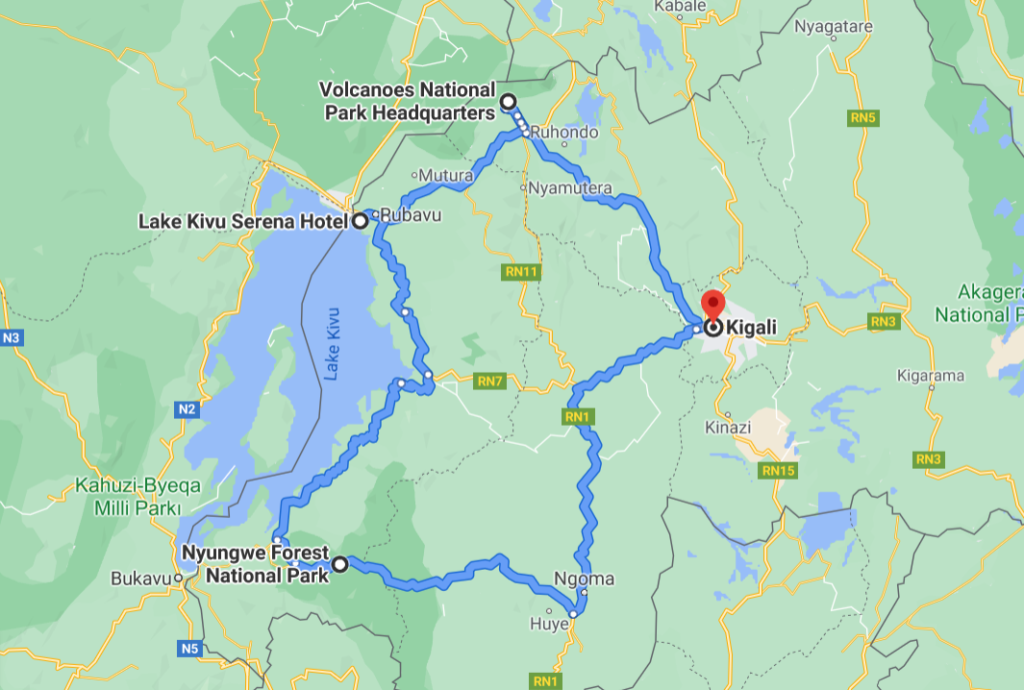
With this rule it did not make sense to visit Akagera anymore. Because if we did, we would have either had to drive back from Volcanoes National Park to Kigali or we would have had to drive from Nyungwe to Akagera at the end of the trip, which would have meant an 8-9 hour drive.
That’s why we could not visit all the places we wanted, but we could not complain either. After all, the trip started right away with the highlight…
Gorilla tracking in Volcanoes National Park
To see gorillas in their natural habitat has been a huge dream of mine for years. I would even say that it was at the very top of my bucket list. Needless to say that my excitement was enormous when we arrived at the visitor center of the Volcanoes National Park, the park in which the gorillas live, at 7AM for the briefing.
There are ten habituated gorilla families in the Volcanoes National Park and the park sells a maximum of 80 permits per day. This means that no more than eight people can visit a gorilla family each day. Visiting the gorillas includes a hike as well. As a rule of thumb, the hike takes between 30 minutes and six hours. The walking distance depends on which group you will visit.
Usually, the fittest visitors are assigned to the gorilla families that demand the longest hike. In our case, we got the choice of walking for 30 minutes or one hour. Since only four tourists participated in the gorilla tracking that day, they obviously offered us the two families that were located the closest. As we prepared ourselves for a hike of several hours, we decided on the “long” variant. Better one hour than thirty minutes we thought.
Before we started, our guide told us how to behave in the vicinity of the gorillas and how to understand some of the apes’ noises or gestures. For example, he told us that we cannot eat, drink or smoke near the gorillas. Any contact with human bacteria can be a life-threatening danger for the gorillas.
The hike was then more like a stroll over fields and partly muddy ground in the forest. After about 45 minutes we already met the trackers, who locate the gorillas and are in radio contact with the guides. The show could begin…
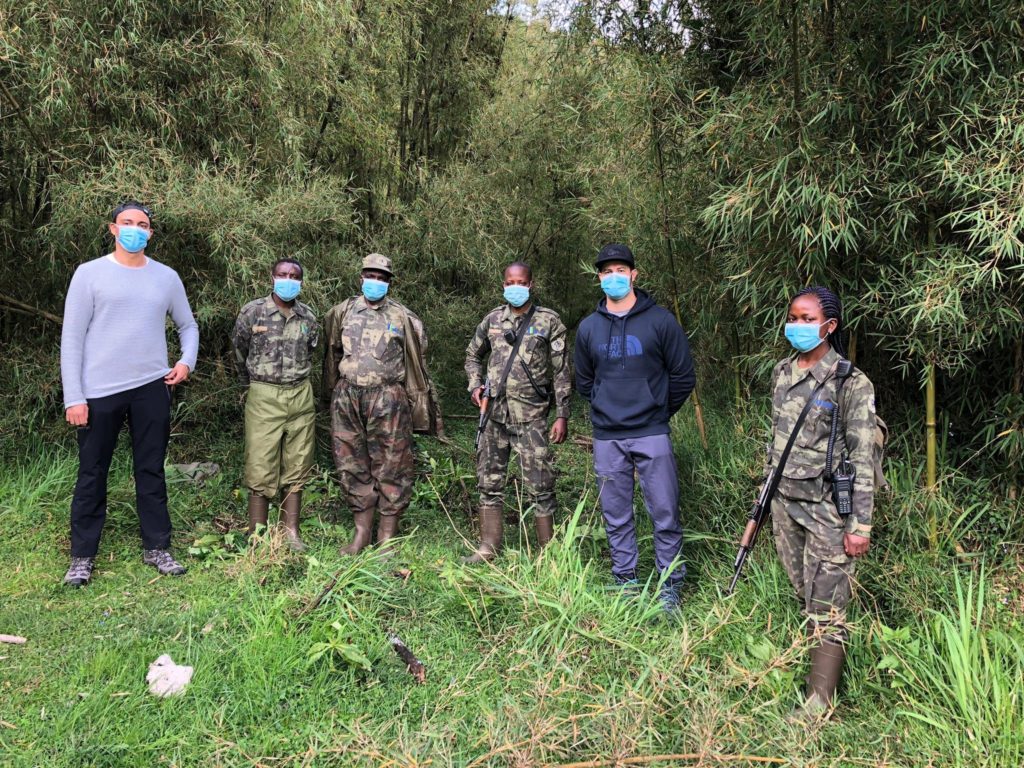
The tracker said the gorillas were about 25 meters away from us. Excitedly, we fought our way through dense bushes until we finally saw black fur a few meters further ahead. This moment when we saw the first gorilla was pure magic.
It was the start of one hour we spent next to the mountain gorillas. The apes did not at all feel disturbed by our presence. In most cases, it even seemed that they more or less ignored us and simply went about their business (eating and resting).
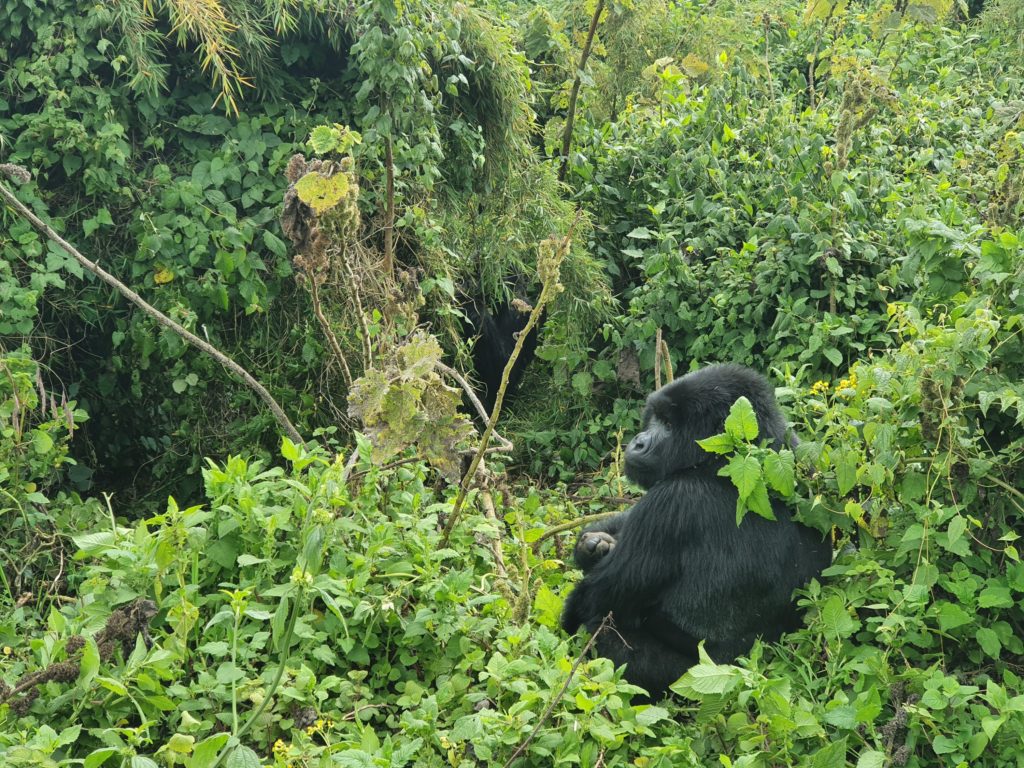
In doing so, we came as close as three or four meters of the gorillas. Because of the pandemic, our guide told us to keep a distance of 10-15 meters. However, it is not really possible to control this, as the gorillas often move towards the visitors.
One member of the family was quite interested in us in contrast to the rest…
There was also a brief moment when a gorilla angrily showed us his teeth because we were getting too close. To say that this moment was thrilling would be an understatement. Fortunately, our tracker and guide understood how to communicate with the gorillas and were able to calm him down relatively quickly.
It was also only a “smaller” teenage gorilla and not the silverback itself. If the silverback gets aggressive, our guide told us to stay put but crouch down and submit. Otherwise, it could happen that you get a punch, as apparently happened to a female tourist a few years ago. Thank God, such a situation did not occur and we always felt safe.
The hour flew by and I would have liked to stay longer because this tour was so amazing. The only thing that was a pity was that we never saw the gorillas in an open field but mostly in dense bush. If I had to rate the visibility of the gorillas on a scale of 1-5, I would give a 3. So we could have done better, but also worse.
Nevertheless, it was a safari and you never know how it will play out. At least in the Volcanoes National Park, the guides do not lure the animals to places (with sometimes questionable methods) so that the tourists can take a better photo. You will just see them where the guides find them.
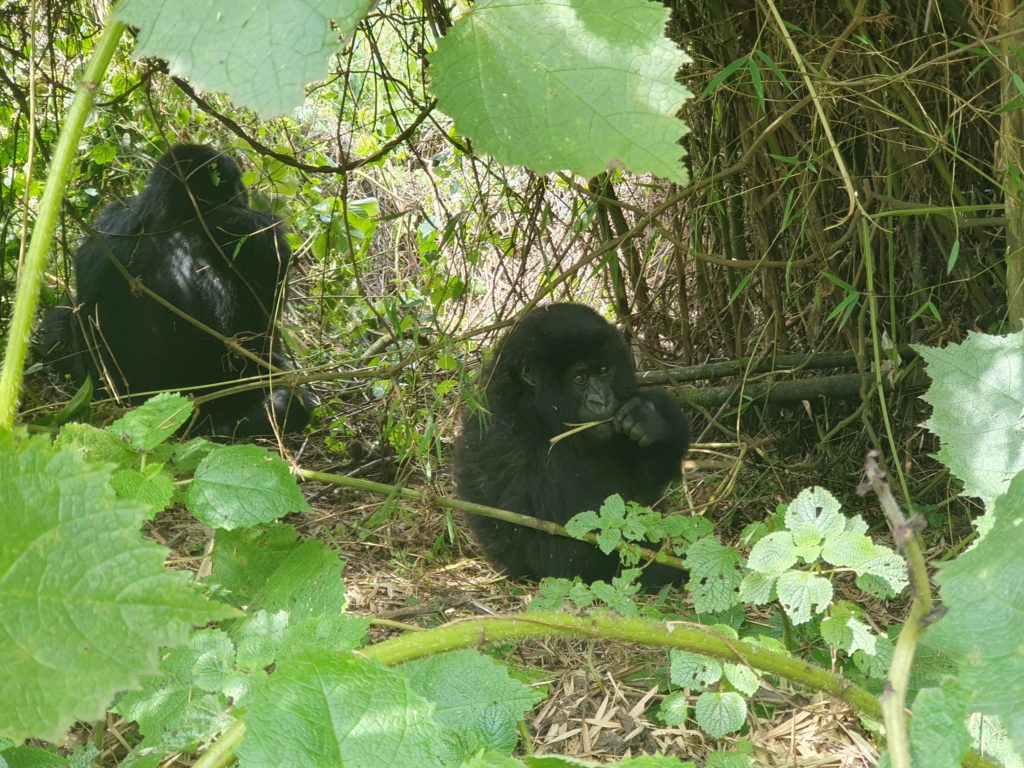
The gorilla tracking was a fantastic experience, there is no question about that. There is a catch, though: the permit for this activity costs 1,500 USD. And no, that is not a typo. One thousand five hundred USD is the price you pay for spending one hour with these incredible creatures. Even though it was my most expensive travel activity ever, it was absolutely worth it for me.
Can you visit the mountain gorillas at a lower price? Yes. In the neighboring country Uganda you pay “only” 600 USD. In the Congo (DRC) even less ($400). Since both countries have currently their borders closed, this was not an option, though. As soon as that changes, I will most likely do the gorilla tracking again in these two countries.
There is however, at least in theory, the chance to see the gorillas for free. You can do several hikes in the Volcanoes National Park, for example you can walk up the Bisoke Volcano. If you are lucky, you will meet the gorillas during the hike. After all, the gorillas do not live in a territory that has been set up for them. Instead, they move freely in the national park. The chance of seeing them this way is rather small, though. So, if you really want to see them, I would recommend biting the bullet and buying the permit.
Even if you now think that this price is outrageously high, there is no question that this is best for the gorillas in the end. It is no mass tourism like in Tanzania or Kenya, where 100 tourists stare at a lion from a distance of three meters. The gorilla families see a maximum of eight tourists per day (during Corona only six). This ensures that it is much less stressful for the apes.
In addition, the national park uses the income from the permits for the conservation of the park and the protection of the apes. As a result, the number of mountain gorillas could be increased from 700 to over 1000 in the past years. Considering that this is a species that is highly endangered, this is a tremendous success story.
By the way, Rwanda is the only country in the world where you can see the mountain gorillas with a stay of only 24 hours – at least in normal non-Covid times.
You can arrive in Kigali in the evening and drive directly from the airport to Musanze in a bit more than two hours. The next morning, you can participate in the gorilla tracking. In the afternoon you can return to the airport from where you leave the country with an evening flight.
However, such a short stay would be a pity, because the country has more to offer than just gorillas.
Golden Monkey tracking
For example the golden monkey tracking, which takes place in the Volcanoes National Park, too. For tourists, who find gorilla tracking too expensive, this activity can be a good alternative (a permit costs “only” 100 USD). This way you can still see monkeys, even if they are not gorillas, and you can also experience the national park.
The golden monkeys, which live only in this region of the world, are easier to find than the gorillas, because they live closer to the habitat of humans and in lower altitudes. Therefore, it only took us about 20 minutes to find them. It was a large family, consisting of an estimated 100 members. We could see them both on the trees and on the ground. Plus, we could definitely see them better than the partially hidden gorillas.
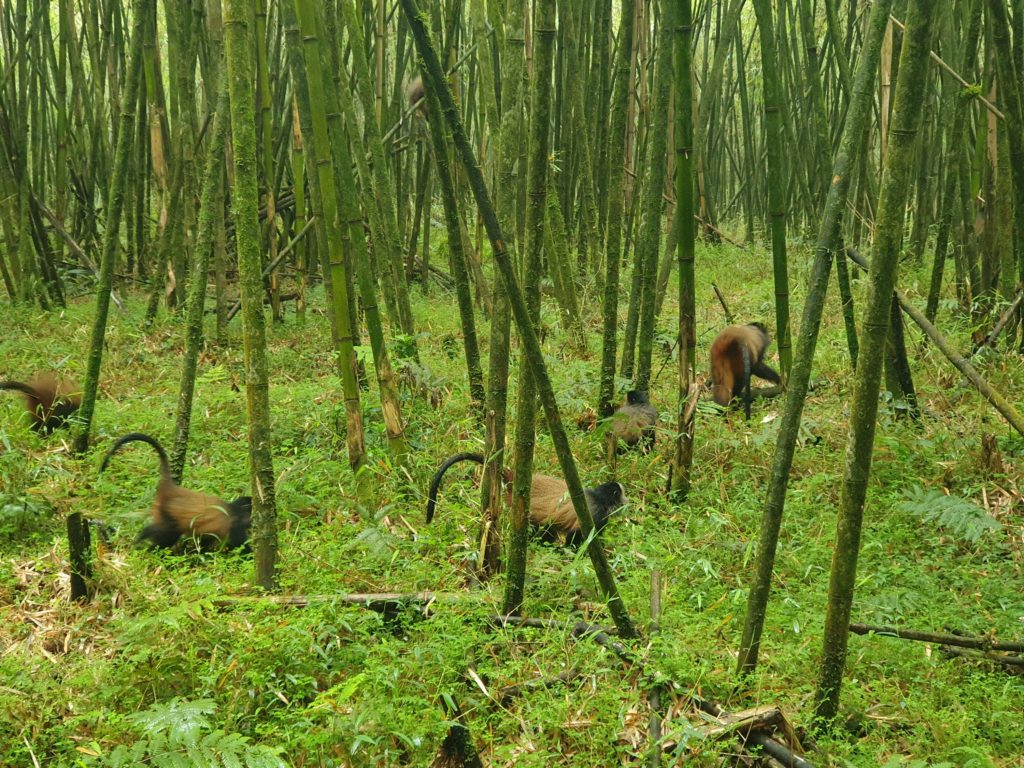
Granted, the golden monkey tracking is not as spectacular as the gorilla tracking, but it definitely exceeded my expectations. It was quite funny to watch these wild creatures running around, especially because there were so many of them. As a bonus, we also got relatively close to them. The monkeys ran away if you got too close and they were on the ground. However, if they sat on a branch, you could get up to 1-2 meters without them going away.
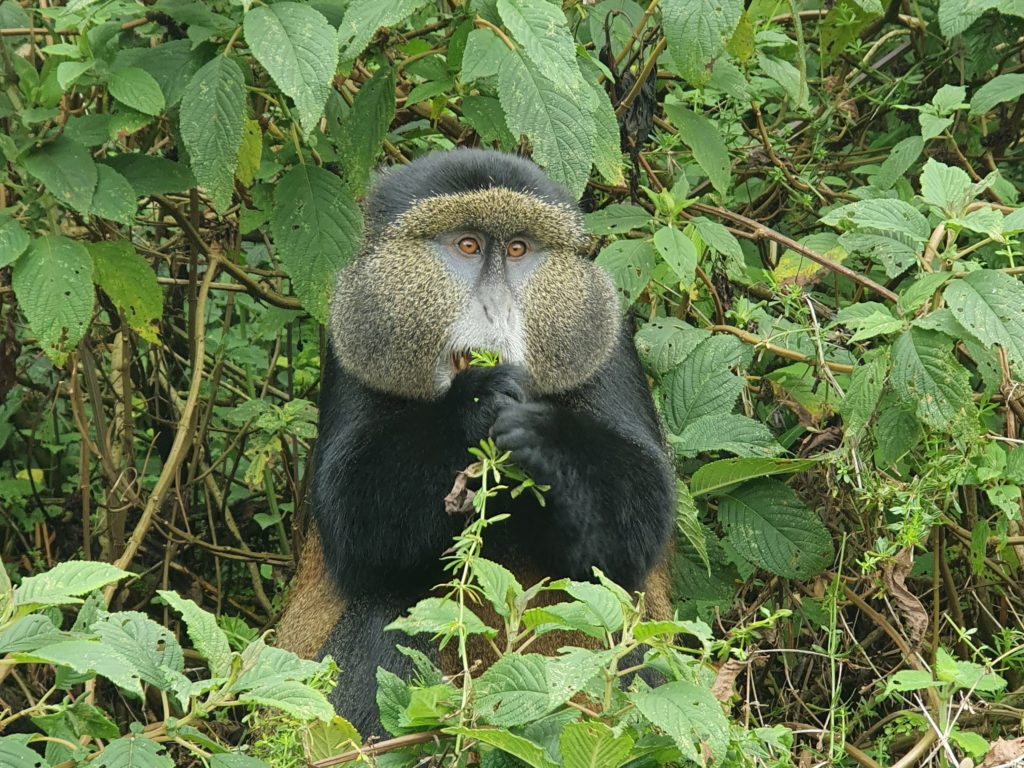
This activity was great and I would definitely do it again. I can also recommend it to everyone who visits the Volcanoes National Park during the Rwanda trip. No matter if you are already doing gorilla tracking or not.
…and the Chimpanzees
However, I would not really recommend the chimpanzee tracking. At least not after my experience.
The chimpanzees in Rwanda are located in the south of the country, in Nyungwe National Park. From Volcanoes National Park the drive takes about six hours. Since we made a stopover at Lake Kivu, the driving time was shortened by another hour. The drive from Nyungwe back to Kigali takes another 4-5 hours by the way.
The reason why I would not do the chimpanzee tracking again is because we could only see these wonderful creatures from a huge distance. The chimpanzees were at the top of a tree. The distance to us as the crow flies was about 80-100 meters. So basically I just saw some black dots moving around in the tree. The only way I could see the face was when I used the 10x zoom of my mobile phone camera.
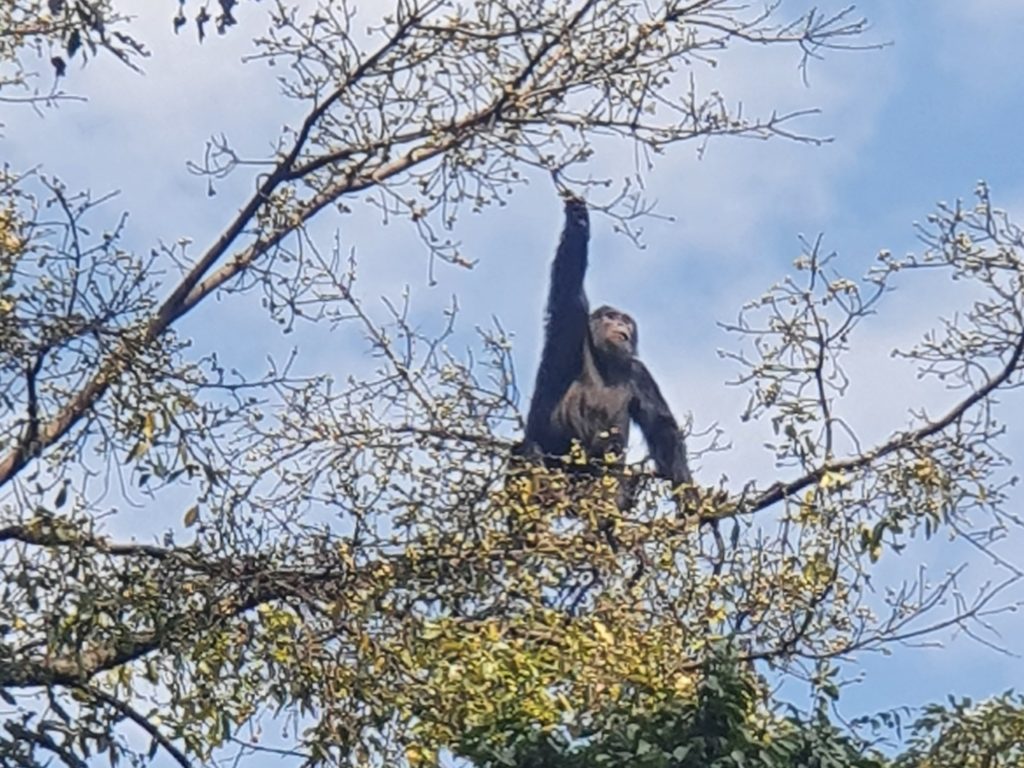
Besides, we found only four chimpanzees. Maybe we were too spoiled by the two monkey trackings the days before, but my expectations were not fulfilled on this day. Too far was the distance to the animals and too small was the family.
In addition, the hike to the chimpanzees and back again is probably in my top5 of the hardest hikes ever. It was a super exhausting day with a relatively low reward. Do not get my wrong, it was not a wasted day at all, but it just was not as good as I expected.
Besides, keep in mind that it is not 100% guaranteed that you will indeed see the chimpanzees. These monkeys cover a much greater distance during the day than the comparatively lethargic gorillas. For this reason it is possible that you will drive to Nyungwe National Park for nothing if you only have one day there and want to see the chimpanzees. An English couple we had met on our trip was not lucky on the first day. Fortunately, they had more than one day in the park and could see the chimpanzees on the second day.
Lonely Planet writes that the chimpanzees in Rwanda are compared to those you can see in Uganda and Tanzania by far the most timid. So, Rwanda might not be the best country if you want to see the chimps. I guess, I will try my luck again when I am in Uganda and hope that my experience will be better there.
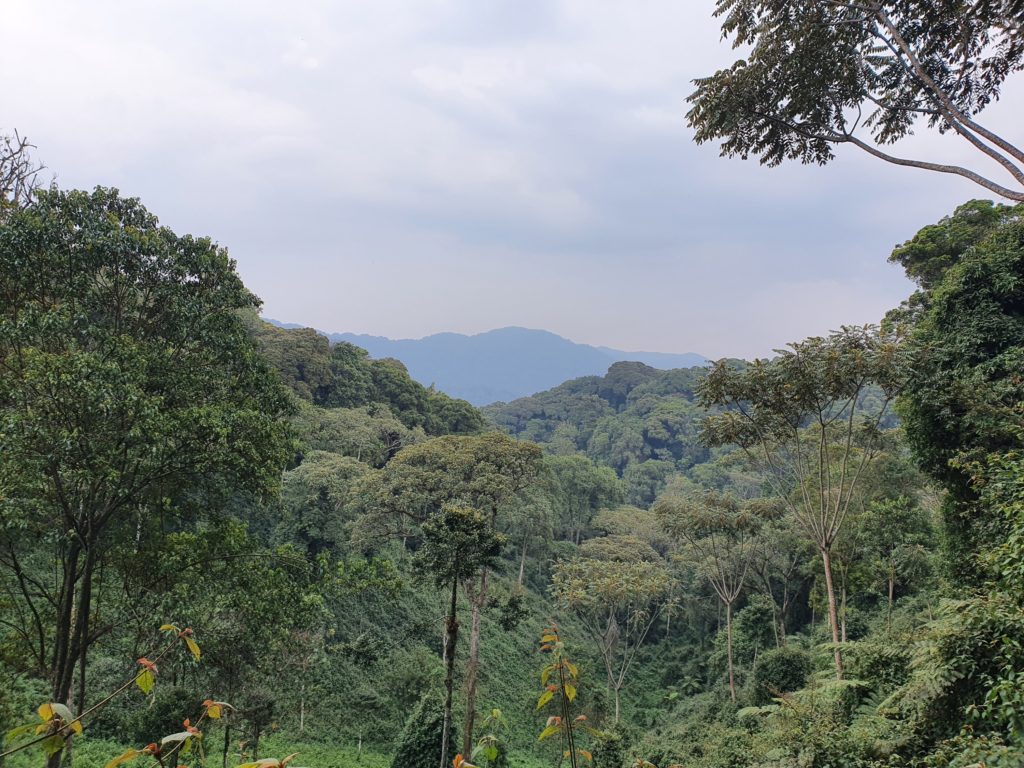
Kigali and the genocide
We did not have much time in Rwanda’s capital Kigali, but enough to get an impression. Kigali is in many ways a special city. It is, like the rest of the country, built around hills. That means that even a short distance on a map can turn out to be a more or less long drive. Or worse, a long walk. Therefore, Kigali is not really a city that you can easily explore on foot.
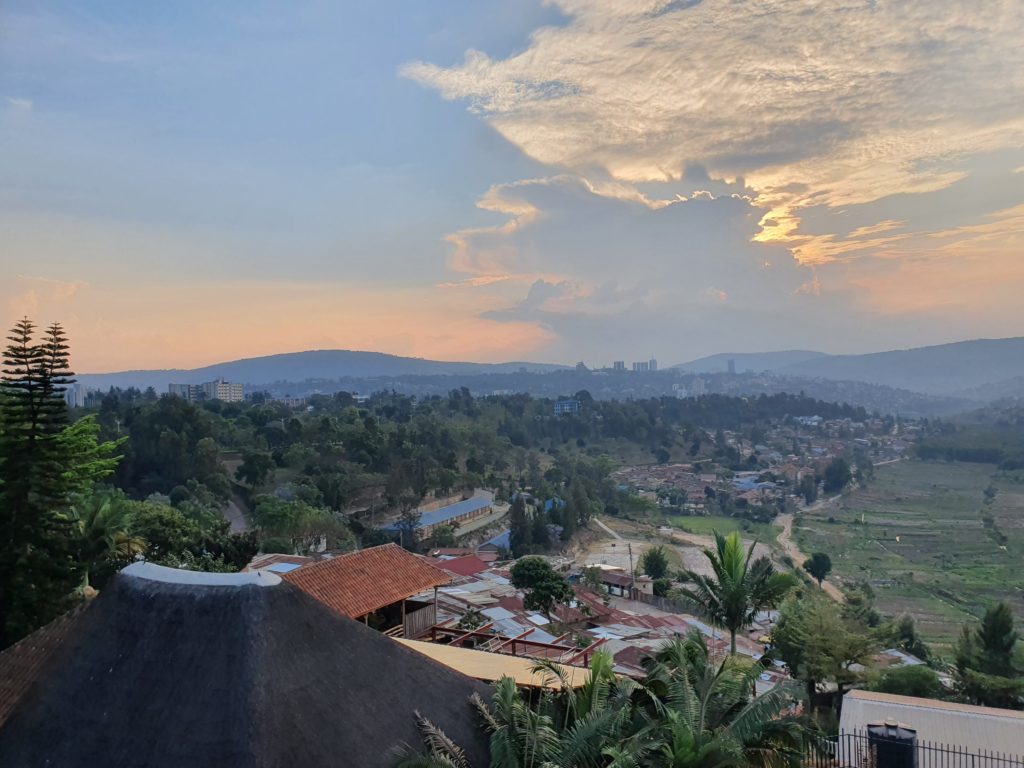
This is not what makes Kigali special, though. What surprised me most was its cleanliness and how orderly everything was. I have never seen an African city with this characteristic. Especially, when you come from hectic Nairobi, where we spent the day before, the difference is enormous.
The sad truth is that it was not always like that here. Rwanda has a very tragic past. In 1994 about one million people were murdered within 100 days, which was one eighth of the country’s population at that time.
Tensions between different ethnic groups (the Belgian colonial powers had categorized the Rwandans into these ethnic groups only a few decades earlier) led to radical Hutus wanting to erase the Tutsi minority. In a cruel and barbaric way, a genocide followed that went down in history as one of the worst of the 20th century.
The genocide is still omnipresent in Rwanda, even 26 years later. When we asked our guide about his family during small talk, he replied that he lost both parents as a small child. Since our guide was 32 years old, it was obvious to us that this happened during the genocide. Of course, in order not to appear tactless, we did not ask further.
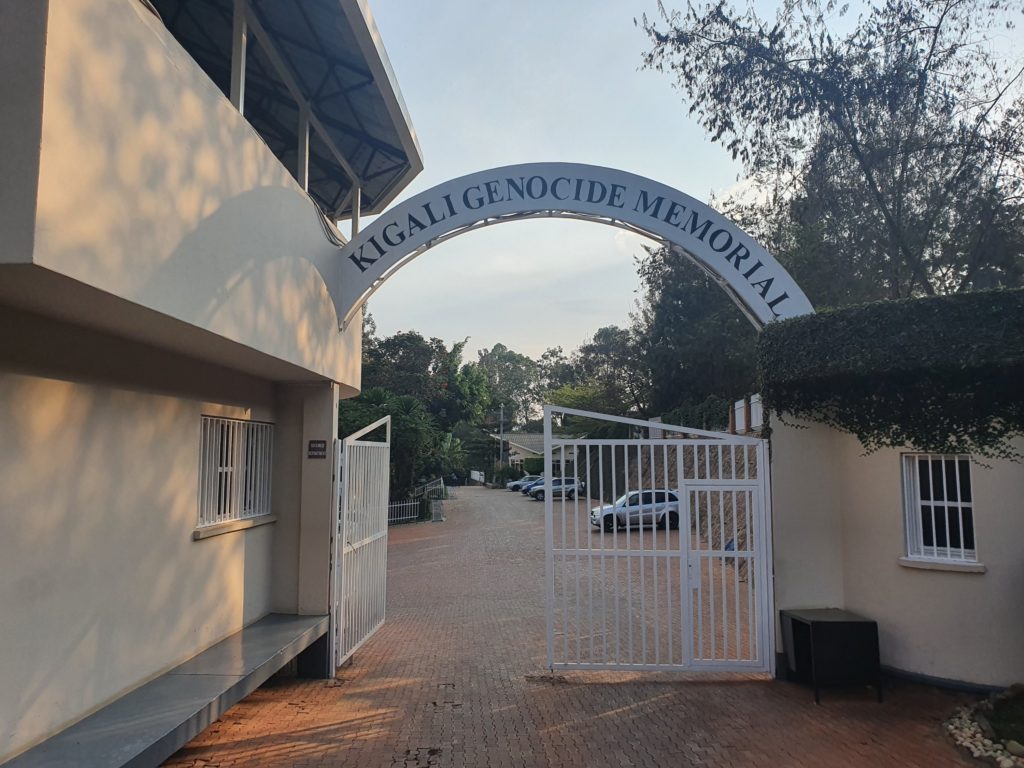
We also visited the genocide memorial in Kigali. The museum looks beautiful, but what you see inside is hard to bear. The visit of the memorial with an audio guide lasts about two hours and shows once more what terrible acts people are capable of. Especially shocking is one of the last rooms, which the museum dedicates to the murdered children…
Also terrible to see is how the world community completely failed 26 years ago and let the genocide happen without action.
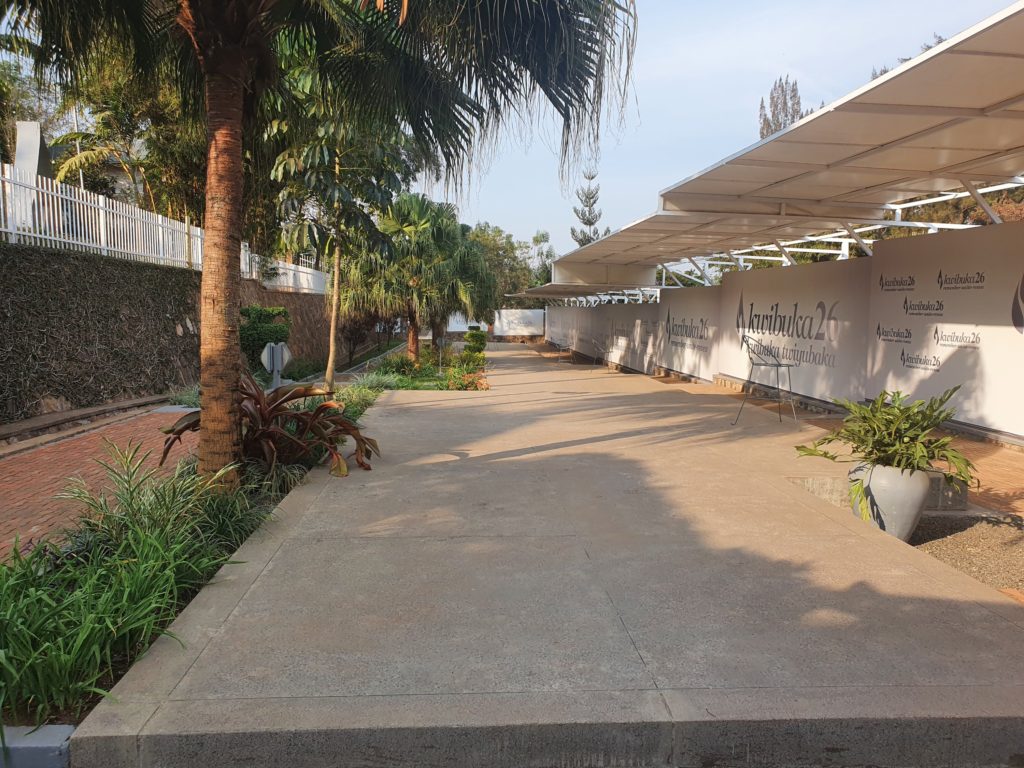
Needless to say, this museum is depressing, because after all it falls into the same category as Auschwitz in Poland or the Killing Fields in Cambodia. Still, it is important that such museums exist and that we never forget the victims.
By the way, we stayed at the Hôtel des Mille Collines in Kigali for the first two nights. During the genoice, the hotel manager, who was himself a Hutu, had given shelter to over a thousand Tutsis and protected them from the killing Hutus. This story was 2004 told in the movie Hotel Rwanda.
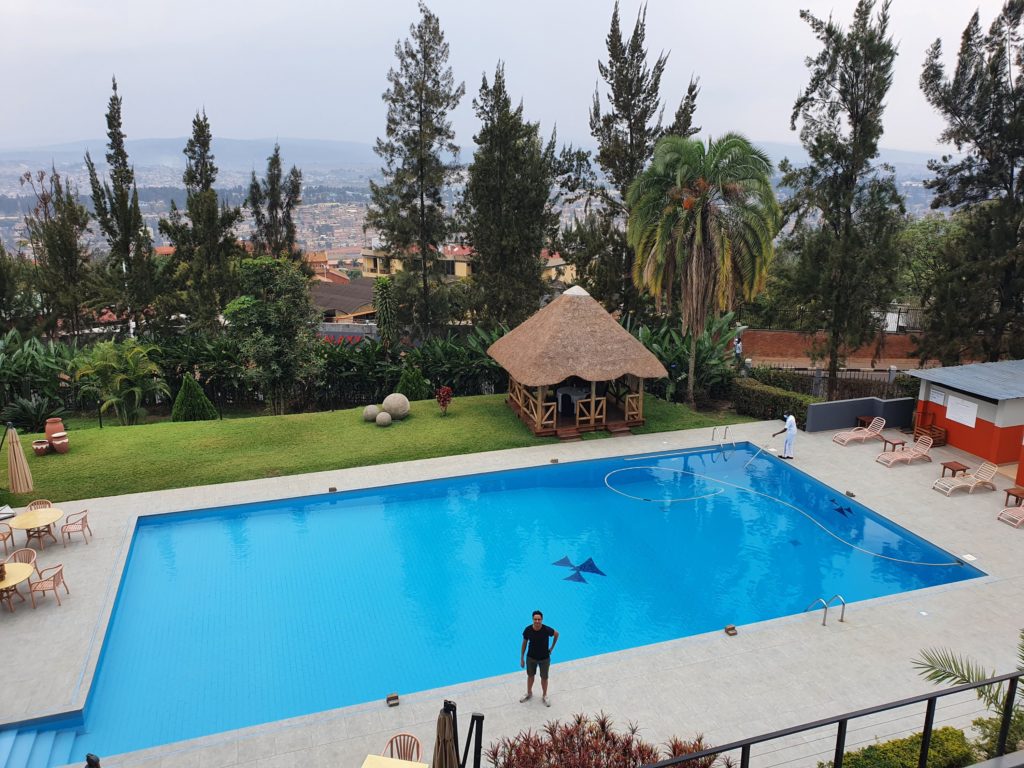
The hotel itself is aging, but it is a historical building and is therefore an interesting place to visit Kigali. Regardless of whether you stay there or not.
Rwanda as a travel destination
Rwanda was my 24th country in Africa and definitely one of the best. Because of the good infrastructure and the professionalism of the Rwandans I would even call it a perfect first country for people who have never traveled in Africa before. Moreover, it is also one of the safest countries in sub-Saharan Africa. If not the safest.
The highlight of the country are certainly the monkeys. However, there are other things to highlight as well. For example the beautiful landscapes, the volcanoes, the Akagera National Park (that we missed), where you can see the Big Five, or Lake Kivu with its sandy beaches. Even the capital is an attraction, especially if you have already seen some African capitals and find with Kigali a strong contrast to them.
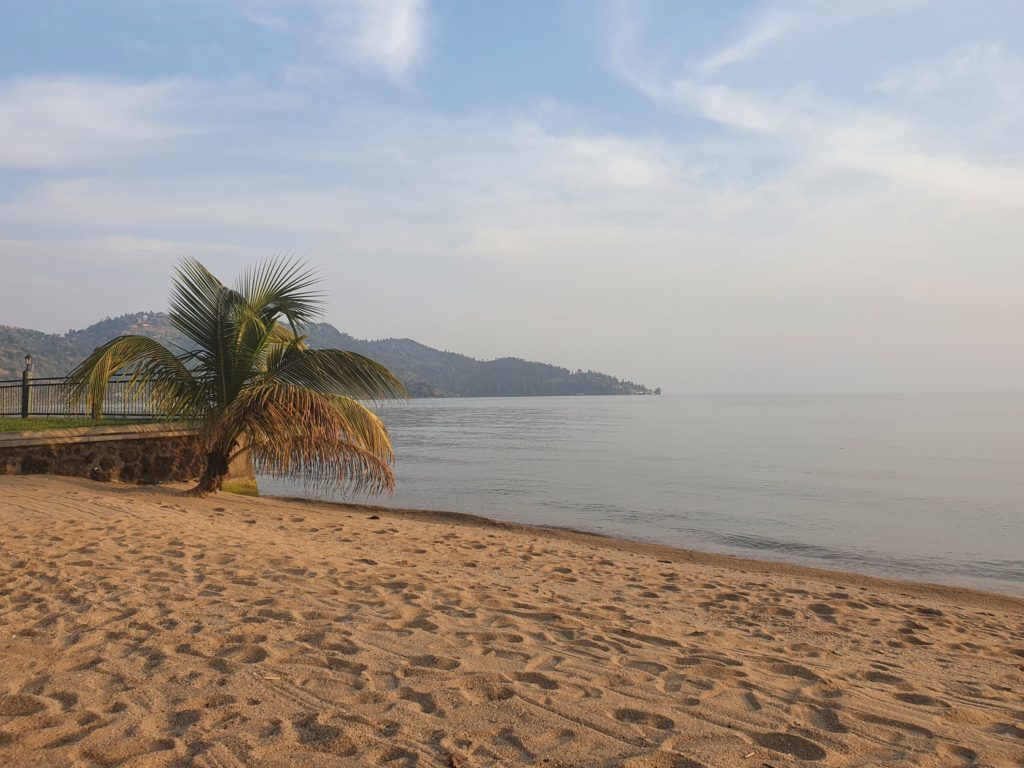
Rwanda is also an easy country to travel. We have booked a tour for this trip mainly because of the pandemic, so that we did not have to rely on crowded public transport. Under normal circumstances I would have traveled the country without a guide, because public transport in Rwanda is cheap, punctual and efficient. The country is also small, so you don’t have to travel too long distances.
Besides, Rwanda is not really an expensive destination. Of course Rwanda aims at high-end tourism with gorilla tracking or the relatively expensive permits for golden monkey tracking or chimpanzee tracking. But Rwanda is all in all a quite affordable travel destination. Hotel prices as well as the prices for food, cabs or transport are in general cheap.
There is basically not much to criticize. The only pity was that during our trip the country was mostly covered in a thick fog, which sometimes ruined the beautiful landscapes a bit. Fortunately, there were always periods when the fog disappeared for a short time (mostly in the morning) and the sky was blue.
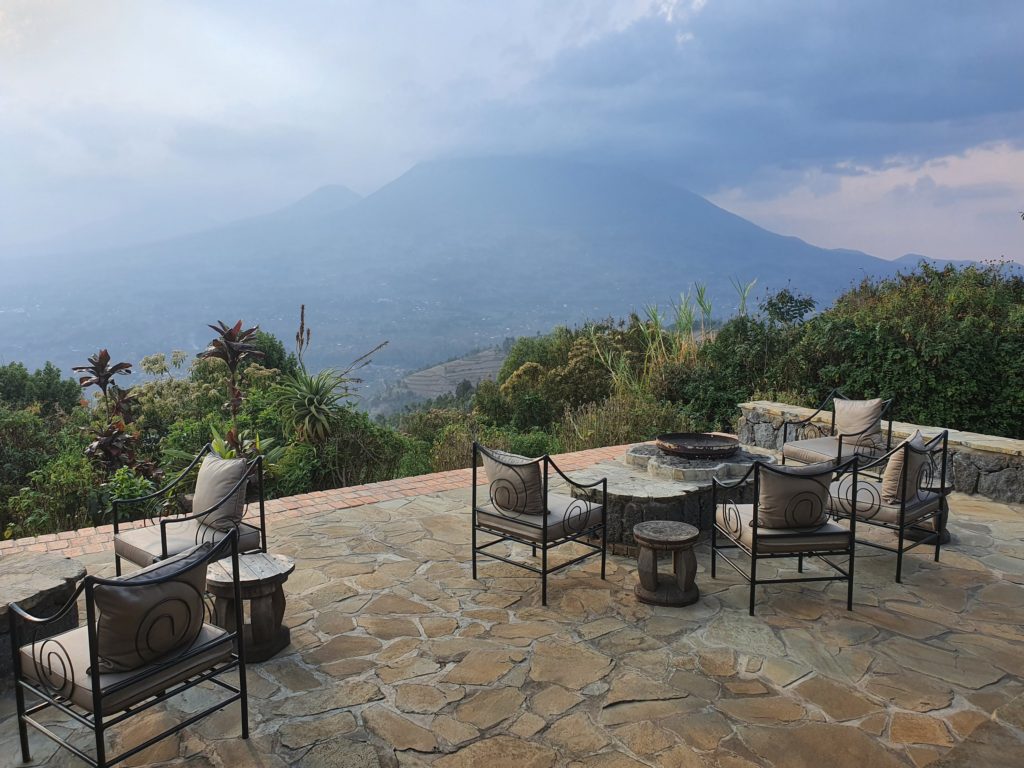
What also struck me, and this is not a point of criticism, was that the Rwandans were rather distanced people. I don’t know if it had anything to do with the pandemic, but the Rwandans seemed reserved to me. In other words, more like us Central Europeans and not like the people I met in other African countries.
Will I ever return to Rwanda again? Considering that I have seen practically all the highlights of the country in these seven days, I don’t think I’ll be making a long trip to this country anytime soon. However, the Virunga National Park in Congo is high on my list. And the best way to get there is via Rwanda. Also Burundi, a country I haven’t been to yet, can be reached from Kigali in just a few hours.
For these two reasons alone, I will definitely visit Rwanda a second time before I am done with all countries. Let’s see, maybe there will even be enough time to visit the Akagera National Park then.
